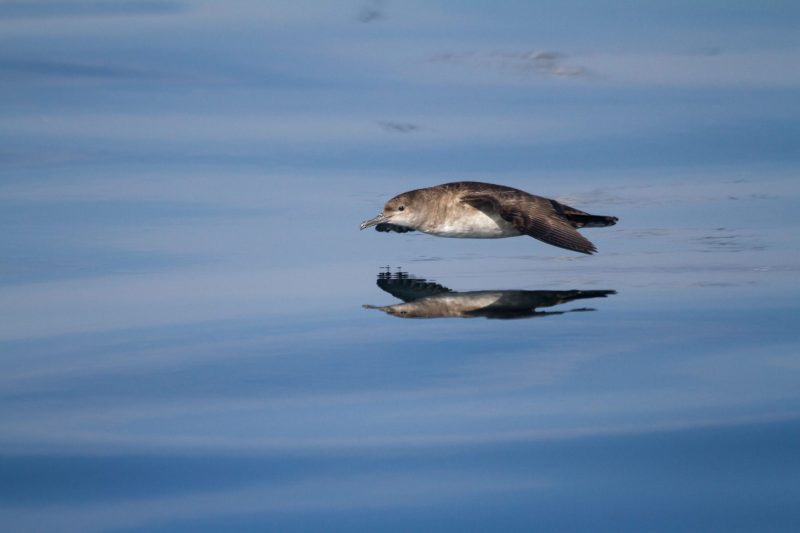Balearic Islands are moving their feeding grounds into the Atlantic Ocean in response to climate change. The science couldn’t be clearer: climate change is a fact and human actions are responsible for it.
Birds are one of the best indicators of the health of the planet. They warn us about climate change, global warming and their consequences. And this is evident from a new study published this week in the journal Proceedings of the National Academy of Sciences (PNAS), led by researchers from the University of Oxford and the result of a collaboration between several British, Spanish and French entities, including SEO/BirdLife account.
A decade of monitoring Balearic shearwaters and climate change
The study analyzes data from almost a decade of monitoring (2010-2018), during which Balearic shearwaters (Puffinus mauretanicus) have been tagged annually in four colonies in the Balearic Islands, two in Ibiza (Sa Conillera and Es Bosc) and two others. in Mallorca (Sa Cella and Dragonera), and their movements have been studied throughout the annual cycle.


For this purpose, geolocators were used, small devices that measure and record light levels, allowing us to approximately infer their position over time. In more detail, if you know the length of the day, you can estimate the latitude at which the birds are located, and if you know the time of sunrise and sunset, you can infer the longitude.
Balearic Islands and climate change: increasingly hotter, increasingly northerly
The results are clear: shearwaters are moving further north as sea temperatures rise, presumably due to the movements of their prey. The research shows that when the Balearic Islands move to the Atlantic Ocean at the beginning of summer, after breeding in the Balearic Islands, they concentrate in two main areas: the northwest of the Iberian Peninsula and French Brittany. The data shows that more and more shearwaters are visiting the northern area (Brittany), and at the same time a northward movement is observed in the most visited areas within each of these areas.
This is one of the fruits of the monitoring program that SEO/BirdLife started in 2011 on the islets of western Ibiza, in collaboration with AZTI and IRBI, and in which French researchers and technicians from the CNRS and the LPO also participated. On this occasion, the data has been combined with that of the British team working in parallel in south-west Mallorca.
“Maintaining long-term monitoring programs is essential to understand the evolution of bird populations and the response to changes occurring in their environment,” said Pep Arcos, coordinator of the SEO/BirdLife marine program and one of the co-authors. article. “Furthermore, it is not just about understanding what is happening to the birds, but they are also excellent indicators of the birds’ conservation status. environment Navy,” he adds.
Balearic Islands and climate change: the mechanisms behind the change
One of the objectives of the work was to understand what mechanisms enable this northward movement. Do young individuals need to learn new routes, or can experienced birds adapt to changes? It is not a trivial question, as shearwaters are birds with a very ‘conservative’ lifestyle and their ability to adapt to changes can be limited. For example, they are very philopatric animals, which means that they breed in the same place for their entire life (which can last several decades), and with the same partner.
Regardless, according to the results of the study, it seems that when it comes to selecting “summer areas,” these birds are flexible enough to adapt to changes individually. It appears that shearwaters would additionally be able to learn migration routes and adapt their return migration strategy based on their acquired knowledge.
And what about the conservation of this highly endangered species?
Despite these interesting results, which indicate a certain adaptability of the shearwaters, a larger question related to climate change remains open: what impact does climate change have on climate change? global warming of the sea, and associated changes in prey distribution patterns in breeding season?
Although shearwaters can fly hundreds of kilometers from the nest to find food, their natural prey – mainly small pelagic fish such as sardines and anchovies – is becoming increasingly scarce in the Mediterranean, and accessing food-rich areas can require long journeys needed. , which could have a very negative impact on their reproduction.
“It is worth remembering – explains Arcos – that these shearwaters breed only in the Balearic Islands, and their philopatriarch makes it difficult to think that they will be able to move to other areas in the future to breed there brood. The species, which is classified as ‘critically endangered’ at global level and is therefore considered the most endangered seabird in Europe, thus adds a new obstacle to other already documented threats, such as accidental capture in fishing gear, predation by species living in their habitat are introduced. colonies, or various forms of contamination. Ironically, another new threat to the species is the development of offshore wind energy, which is being presented as the spearhead in the fight against climate change”.

